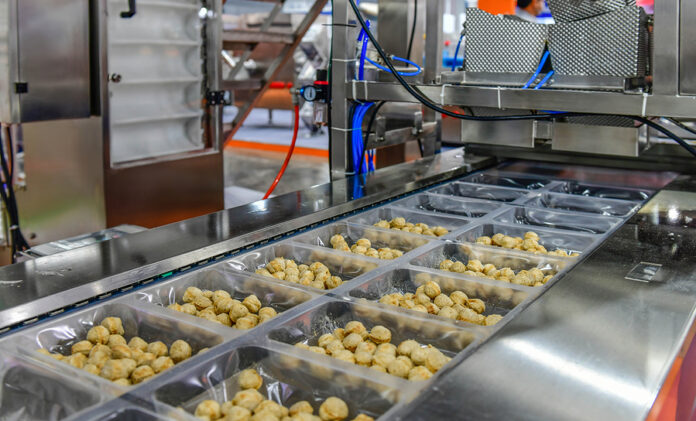
By Greg Heartman, VP, Product Management, TraceGains
The supply chain crisis that began with the pandemic and deteriorated with geo-political and macroeconomic events hit food production harder than most sectors. And looking back, it offered a stark reminder for food and beverage brands about the importance of ingredient agility. The ability to quickly find alternate ingredient sources and have confidence in the suppliers providing them, especially during moments of crisis, is (and remains) an economic imperative. Today’s food and beverage brands took those lessons to heart and updated their supply chains to future-proof operations.
Alternate suppliers on standby
At the pandemic’s peak, more than four in five organizations experienced at least one significant supply chain disruption, with half experiencing three or more. In addition, natural disasters and political unrest led to highly publicized shortages of key ingredients, and the trickle-down effect on both CPGs and consumers was unprecedented. Production delays, product shortages, and higher supermarket prices signaled a turning point. According to the “2022 State of Supply Chain Disruption” report, almost 90% of manufacturers surveyed agreed that the rise in ingredient prices significantly influenced their business strategies.
Product innovation
Ingredient agility doesn’t just build a firewall against supply chain shortages. The ability to quickly experiment with new ingredients and formulations helps bring products to market faster, enabling them to remain competitive. Innovation is the cornerstone of accelerating development cycles, allowing greater flexibility, and developing healthier, more sustainable food and beverage products that keep consumers returning.
In today’s fast-paced market, responding quickly to changing trends and consumer preferences can be the difference between success and failure. New product development (NPD) and the ability to experiment with new ingredients and formulations are essential to quickly meet consumers’ evolving needs and preferences with products that are in high demand and stand out in the marketplace.
Meeting regulatory compliance
The U.S. Food and Drug Administration (FDA) regulates about 78% of the U.S. food supply and, as anyone in the industry knows, constantly updates regulations and can introduce new ones at any time. Therefore, ingredient agility is a crucial part of timely regulatory compliance. For global brands, it’s imperative to have mechanisms that ensure cross-border compliance, particularly where regulatory requirements might conflict.
Easy access to a bank of approved ingredients allows brands to adapt formulations to meet changing regulatory requirements quickly. Responding promptly to new regulations and standards with alternative ingredients that meet the necessary standards reduces the regulatory burden, helping to avoid costly penalties or legal action for non-compliance.
In addition, ingredient agility allows manufacturers to respond quickly to potential supply chain issues, thereby preventing contamination or other safety concerns. For instance, if brands discover a particular ingredient supplier is shipping contaminated products, the more agile ones can swiftly switch to a different supplier to avoid using the contaminated ingredient. This adaptability helps ensure safe, and FDA-compliant finished goods.
Promoting sustainable supply chains
According to Mintel Consulting’s 2022 Sustainability Barometer, more than half of consumers worldwide say that responsibility for saving the planet — environmentally speaking at least — should rest with manufacturers and governments, not individual consumers. This shift in consumer attitudes has led many brands to prioritize sustainability in their operations and products. Ingredient agility empowers brands to meet this demand by quickly adjusting their ingredients and re-formulations so they can choose ingredients that reduce waste, lower the carbon footprint, encourage biodiversity and responsible sourcing, and enhance supply chain resilience.
In conclusion, food and beverage brands have taken these lessons to heart and updated their supply chains to future-proof their operations. Ingredient agility defends against supply chain shortages and enables product innovation, regulatory compliance, and the promotion of sustainable supply chains. In today’s fast-paced market, ingredient agility is crucial to meet consumers’ evolving needs and preferences and remain competitive.
 Greg Heartman, brings over 15 years of experience in food and beverage compliance as the VP of Product Management at TraceGains. Prior to this, he was the Web Marketing Manager at Digimarc Corp, held executive producer positions at StudyDog and 800.com, was the Marketing Program Manager at Centerspan Communications and worked at Healthnotes, Inc. He joined Aisle7 as the Director of Program Management & Editorial n April 2005, a position he held until July 2013. Greg has an MFA in Writing from The University of Memphis and a BA in English from University of Puget Sound.
Greg Heartman, brings over 15 years of experience in food and beverage compliance as the VP of Product Management at TraceGains. Prior to this, he was the Web Marketing Manager at Digimarc Corp, held executive producer positions at StudyDog and 800.com, was the Marketing Program Manager at Centerspan Communications and worked at Healthnotes, Inc. He joined Aisle7 as the Director of Program Management & Editorial n April 2005, a position he held until July 2013. Greg has an MFA in Writing from The University of Memphis and a BA in English from University of Puget Sound.








